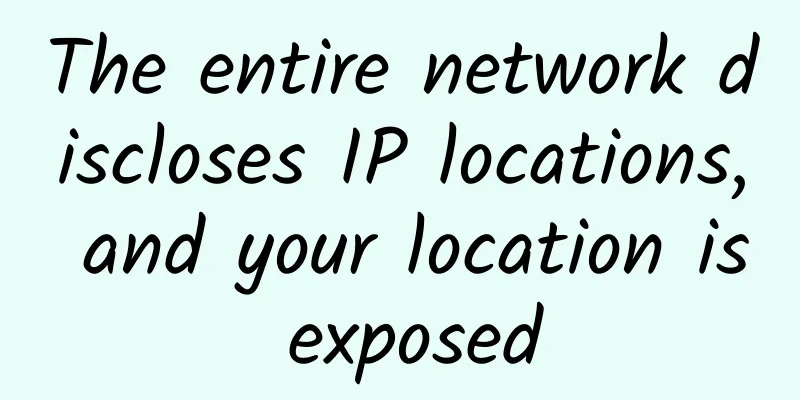Five network management trends for 2022

|
In recent years, the development trend of network management has also undergone some changes. In the past, enterprise networks usually adopted LAN technology, which enabled employees within the enterprise to keep in touch with each other. With the advent of the Internet era, there was a need to establish a closer connection with the outside world. Wi-Fi then gained the upper hand. Enterprises now need to provide powerful wireless LANs and help remote employees establish a good connection with the network. The edge network is now around people. Here are some of the key trends in network management: 1. Edge Networks SurgeThe network edge is one of the hottest areas in the network right now. According to a study on the edge internet economy by Chetan Sharma Consulting, a research firm, the global edge economy will reach a market size of $4.1 trillion by 2030. This has great significance for network management. The enterprise's IT team must not only manage LAN, Wi-Fi, remote connections via VPN and other traditional duties, but must also be able to monitor, maintain and manage the many edge devices and small data centers expected. For example, telecommunications companies are investigating the possibility of combining edge data centers with their cellular towers to be able to send data to on-premises facilities and central points, aggregate the data and store it for a period of time. Autonomous vehicles will also require a large number of edge services to be able to monitor the various factors required for safe and efficient transportation. The adoption of IoT technology will also be required, with tens of billions of IoT devices currently connected to the global network. This will translate into a huge demand for edge processing. 2. The need for partnersAs networks become more complex, as edge computing rapidly develops, and as the Internet of Things gathers momentum, it is becoming increasingly clear that no one enterprise can do it all. As a result, network management vendors are partnering with edge computing and IoT experts. IT vendors are building closer relationships with network vendors to meet the needs of changing network architectures. Enterprises are looking for every bit of help they can get so they can integrate edge computing, IoT, and other data into their business operations. According to a 2021 study by Informa, 20% of business leaders are already looking for the right delivery partners for IoT and edge computing services. This number has increased significantly over the past year. 3. Containerized NetworkingMike Mulica, CEO of Alef, said that more and more enterprises are creating custom services using third-party infrastructure. These managed functions provided as services are being orchestrated into specific business logic. For example, enterprises can access the Docker registry with many software functions packaged as containers, which will be orchestrated into working applications using Kubernetes. "Because there is no specific device associated with the service, the network management system has no idea about service availability," Mulica said. Therefore, network management systems will have to address the challenges of these containerized networks. 4. Get rid of device-centric managementTraditional network management systems are built primarily to handle device management functions and how to provide services to these devices over the network. Services are provided by devices and are available as long as the devices are up and running. But this long-standing approach is changing due to trends such as virtualization, software-defined networks, cloud computing, and edge computing. “The relationship between services and devices is being disaggregated, and existing network management frameworks must change as new frameworks are developed and implemented that span different layers of the stack and provide orchestration across multiple domains in a multi-cloud environment,” Mulica said. “Addressing this requires understanding how hosting and connectivity work and how they are used to create new services, which leads us to rethink network management as service orchestration.” As a result, network orchestration vendors are seeing increasing interest in their products. In addition, many of these vendors, as well as traditional network vendors, are working to drive the as-a-service market to bring new types of network management to market. 5. AI and analytics drive network managementAI is being incorporated into more and more applications and workloads. But there’s a major networking issue holding it back. It takes a long time to connect AI systems to data at the edge. If the architecture is too centralized, it can take up to an hour for data to be processed locally, transferred to a central AI system, analyzed, and then the results or instructions transferred to where they’re needed. This may work when an enterprise is dealing with next quarter's sales forecasts, but fails miserably when real-time workloads (e.g., self-driving cars, financial fraud systems, etc.) are at play. The network changes required are to enable data to be processed and analyzed at the point of creation, rather than having to be transmitted to a central data center. This means edge data centers with a lot of processing power. |
<<: Indoor 5G gets a boost with arrival of small cells
>>: What exactly is the “computing power network”?
Recommend
What is the Internet of Behavior (IoB)?
One of the fascinating things about technology is...
Why is 5G a boon for enterprises exploring the development of the Internet of Things?
There is an interesting analogy to understand IoT...
Embracing the edge: Unleashing the potential of on-board computing
Most discussions about technology transformation ...
Fearing that 5G deployment will affect aviation safety! US aviation agencies and telecommunications agencies are in dispute
Although 5G (fifth-generation mobile communicatio...
Paving the way for innovative applications, all-optical networks are moving from enterprises to ordinary people's homes
[[386853]] From dial-up to ADSL, and then to fibe...
Chen Peizhen, General Manager of DYXnet, the first-line: Analyzing the innovative architecture and development strategy of "AI + Cloud Network Security" service
On November 16, 2024, a grand event focusing on c...
UL launches Wi-Fi 6E testing service in Europe
UL announced this month that it has begun offerin...
Here are 24 C++ pitfalls to avoid.
[[396092]] This article is reprinted from the WeC...
Tencent Cloud Double 11 cloud server annual payment starts from 88 yuan, get 1111-8888 yuan voucher
Tencent Cloud launched the 2023 Double Eleven eve...
Security and Reliability of Critical Infrastructure Fiber Optic Networks
Figure 1: Growing Asia Pacific fiber optic market...
Let’s talk about the complete guide to HTTP status codes. Have you learned it?
1. Overview of HTTP Status Codes 1. Concept When ...
Huawei releases full-scenario intelligent connectivity solution
[Beijing, China, October 13, 2020] Today, the 6th...
P2P Confession | I don’t produce content, I’m just a route planner for content delivery
When people mention P2P now, they will think of t...
my country's network infrastructure already fully supports IPv6
At the 2020-2021 Global IPv6 Development and Outl...
Four experiments to thoroughly understand the disconnection of TCP connections
[[431016]] Preface Seeing this title, you may say...









